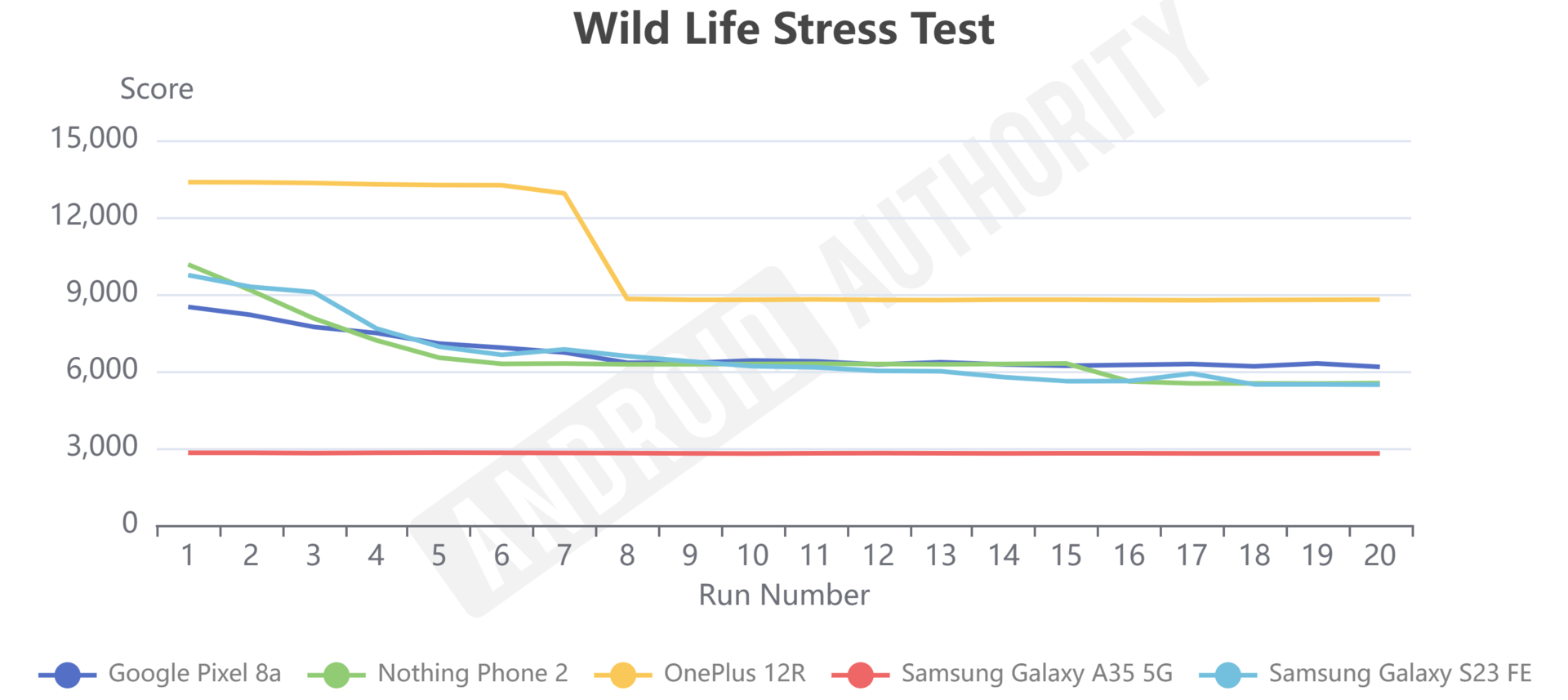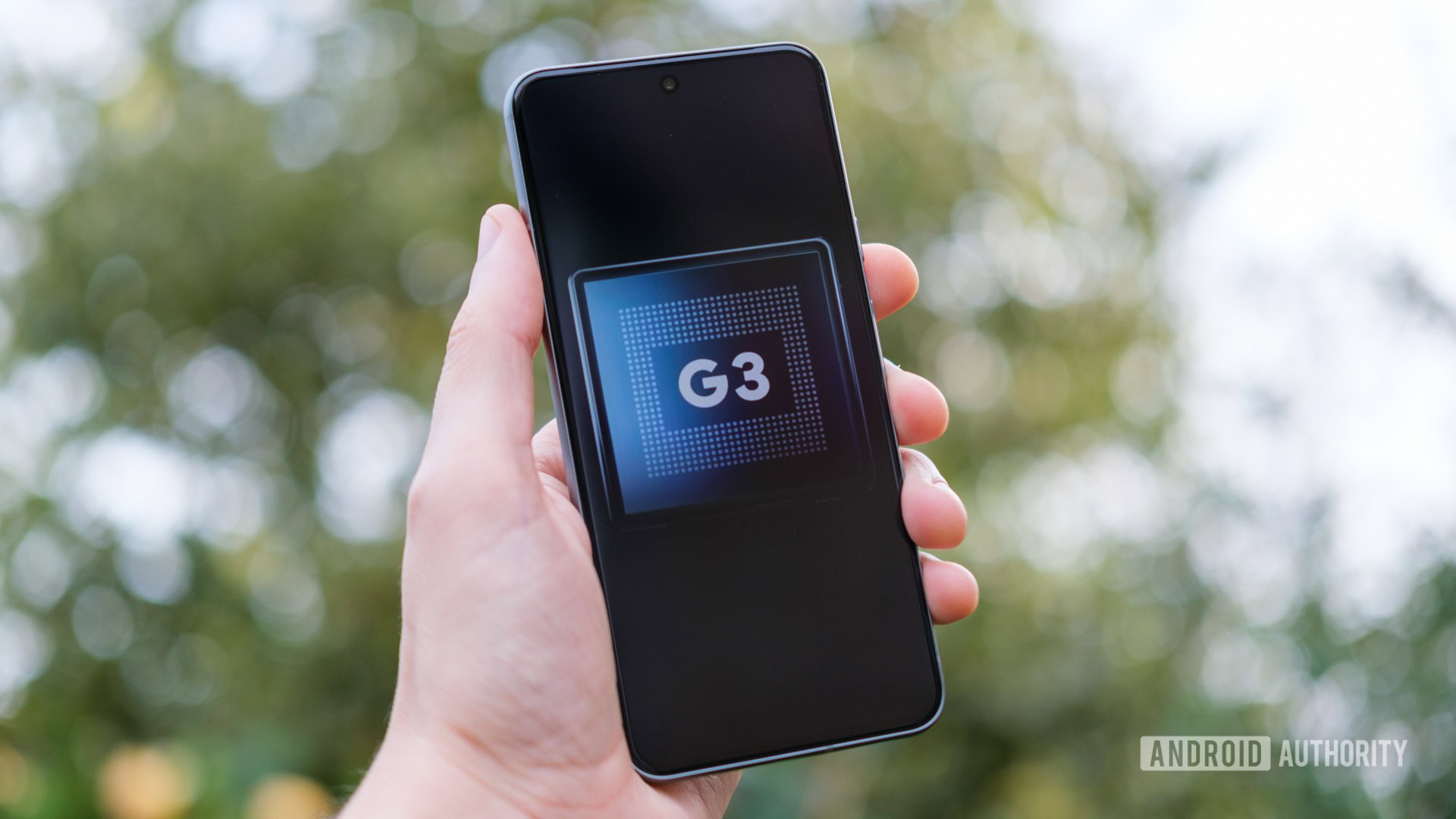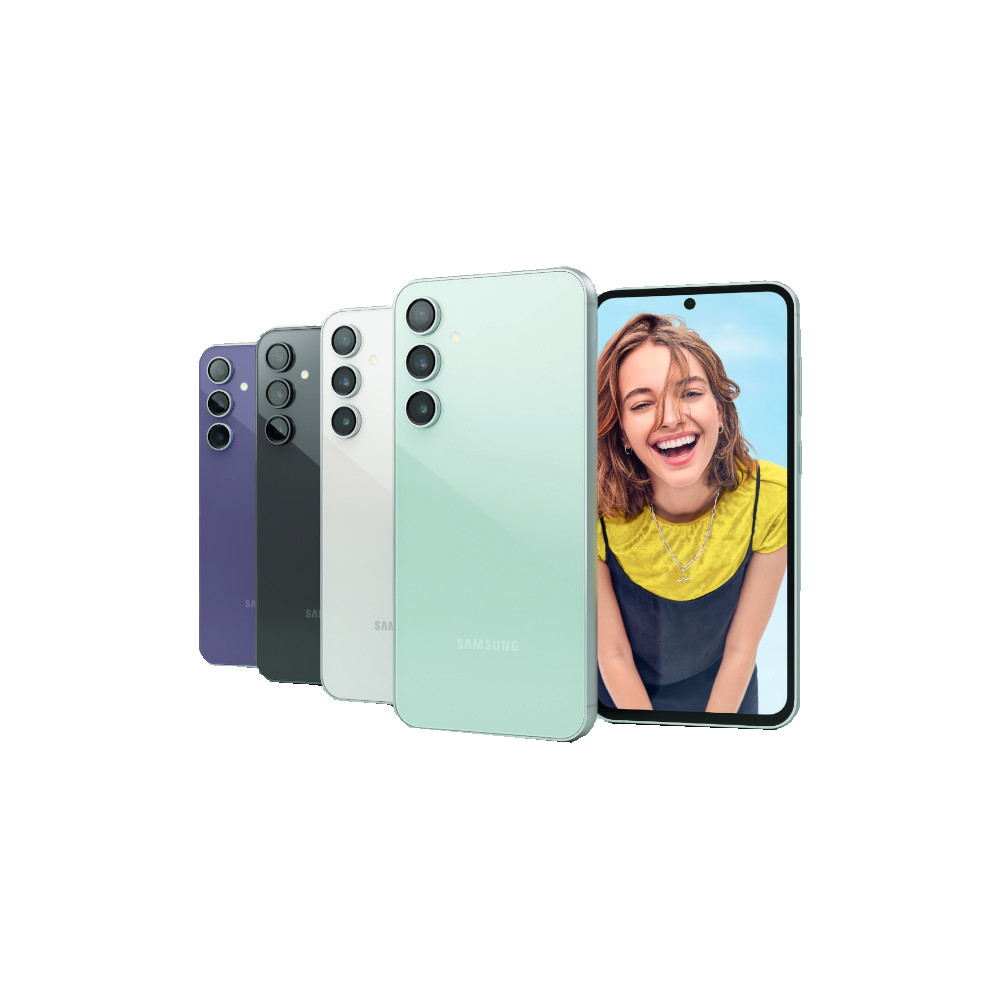Affiliate links on Android Authority may earn us a commission. Learn more.
Is the Tensor G3-powered Pixel 8a the most powerful phone you can buy for under $500?
Published onMay 20, 2024
Google’s Tensor G3 processor powers a selection of impressive AI features in the Pixel 8 series, but it’s a little underwhelming when it comes to more traditional performance metrics. Its slightly older CPU cores can’t keep up with flagship chips like the Snapdragon 8 Gen 3, while its graphics performance and lack of ray tracing arguably push the chip closer to the mid-range than the top-tier for gaming. Still, the newer Google Pixel 8a sports the Tensor G3 at a very palatable $499 price tag; perhaps Google’s flagship silicon can stand head and shoulders above more affordable competitors.
Before we get into that, are all Tensor G3s equal to begin with? Past testing revealed that the Pixel 8 performs marginally slower than the Pixel 8 Pro, especially in stress tests, despite apparently using the exact same silicon. To check, we ran the 8a against the two flagship variants, and the results are reassuring. The Pixel 8a performs roughly in line with the regular Pixel 8. It scores a little lower in GeekBench 6 multi-core and PCMark’s mixed Work 3.0 workloads, but there’s not a lot in it. Impressively, the 8a performs marginally better when put through 3DMark’s intensive graphics stress test.
Still, it can’t touch the top-tier Pixel 8 Pro, which comes out on top by a few percentage points across all of our tests. Equally, there’s a solid performance uplift over the last generation Pixel 7a, with the 8a coming out well ahead in every test.
Pixel 8a benchmarks vs the competition
OK, so what about phones at a similar price point? To test, we stacked the Pixel 8a up against the mighty OnePlus 12R ($599.99 at Amazon), the budget Samsung Galaxy A35 ($359.99 at Amazon) (disappointingly, the swankier Galaxy A55 isn’t coming to the US), the often discounted Samsung Galaxy S23 FE ($599.99 at Amazon), and the older but also slightly more expensive Nothing Phone 2 ($599.99 at Nothing). Let’s take a look at the results.
2023’s Qualcomm Snapdragon 8 Gen 2 inside the OnePlus 12R tops our first batch of benchmarks, clocking a multi-core GeekBench 6 score that pushes it out ahead of other $500 handsets. Single-core performance is a much closer run competition, owing to the use of powerhouse Cortex-X CPU cores across the board. Still, the Pixel 8a’s Tensor G3 keeps pace with the Snapdragon 8 Gen 1-powered Samsung Galaxy S23 FE and isn’t far behind the 8 Plus Gen 1 in the Nothing Phone 2 for multi-threading capabilities. It is clear that the more budget-focused Galaxy A35 is well behind the competition here.
However, the Pixel 8a’s PCMark Work 3.0 score is notably lower than the competitors. This suggests a more battery-focused approach to these specific workloads and/or a bottleneck in components like memory. It’s a bit of an oddity, given the phone competes so well in GeekBench 6, but it might mean that some workloads run slower than the competition. We’ll have to spend more time with the device to see if this affects daily use.

Turning to graphics performance, the Pixel 8a’s GPU is a little behind even this mid-range pack for single-test runs. However, it pulls back this deficit once the heat starts building up. Stress test performance ends up comparable to the Galaxy S23 FE and Nothing Phone 2 and their older flagship processors. In other words, the Pixel 8a will handle casual games just fine and should be able to play even the highest-end titles with the graphics turned down a notch.
Slightly more modern flagship silicon in the OnePlus 12R gives the phone a major advantage in the graphics department, and solid cooling makes it by far the best of these phones in our stress test, too. If you want a high-performance phone on a budget, the 12R is a brilliant choice. Samsung’s Galaxy A35 offers just a fraction of the 8a’s performance here, though the low-end GPU can’t put out enough heat to cause any throttling issues. Can we call that a win?
Tensor G3, a solid mid-range chip

We have been reluctant to recommend the Tensor G3 and the Pixel or 8 Pro to those looking for the absolute best performance at the flagship end of the market. However, at $500, the Pixel 8a and Tensor G3 combination offer performance that is well in the mix with other budget phones and even some that retail at slightly higher prices, such as the Galaxy S23 FE and Nothing Phone 2. Paired with AI capabilities that you can’t find at this price anywhere else, at least not yet, the Pixel 8a is a potent force in the mid-range market.
The Pixel 8a delivers competitive mid-range performance, but the OnePlus 12R is the $500 champ.
That said, those looking for the absolute best in the way of classic performance metrics at the $500 mark can’t go wrong with the OnePlus 12R. While not packing quite the latest flagship Snapdragon 8 Gen 3 processor, the 8 Gen 2 continues to perform excellently in both everyday tasks and high-end gaming. It outpaces Google’s budget option and even the more expensive Pixel 8 Pro. However, you’re trading down the AI features, wireless charging, and long-term updates that make the Pixel 8a a solid all-around pick for just half the price of your typical flagship phone.

Incredibly fast 80W wired charging
Superb value

Tons of Tensor G3-powered features
Pixel-pedigree cameras

Good size battery
Competitively priced